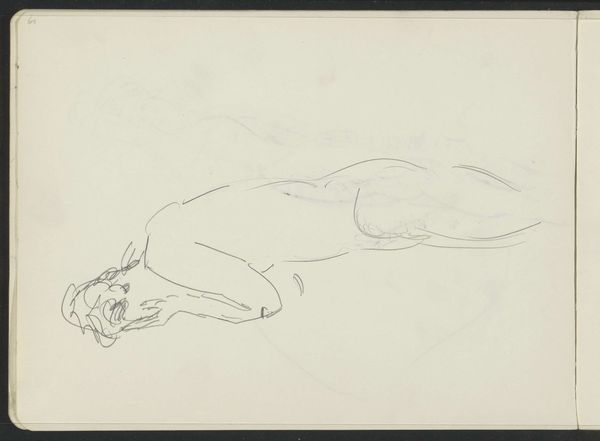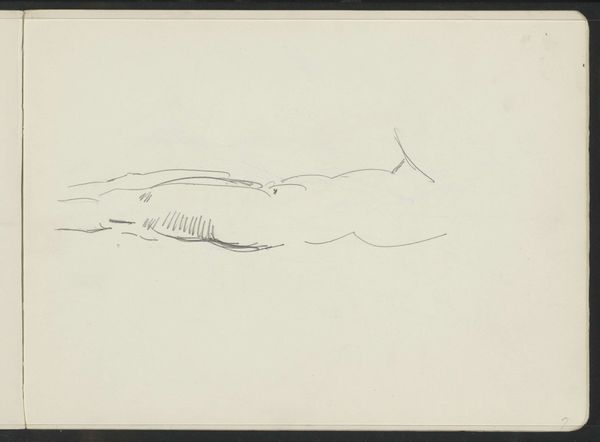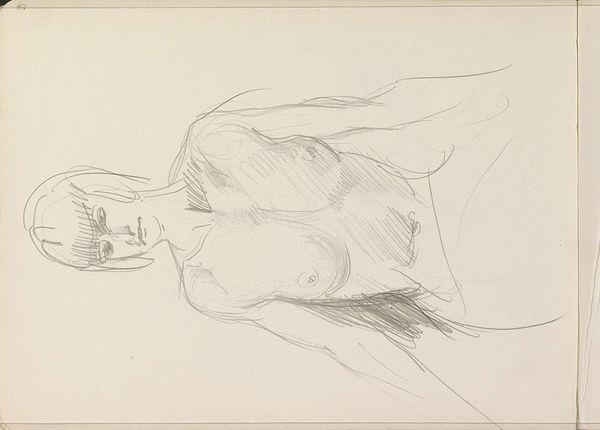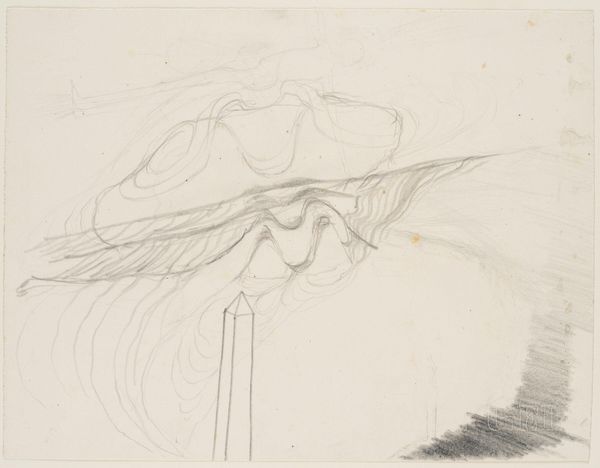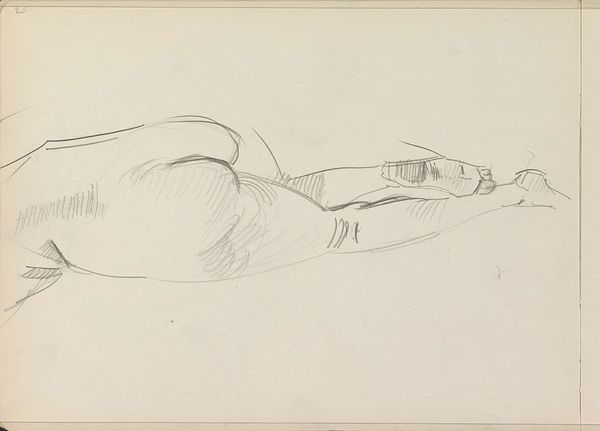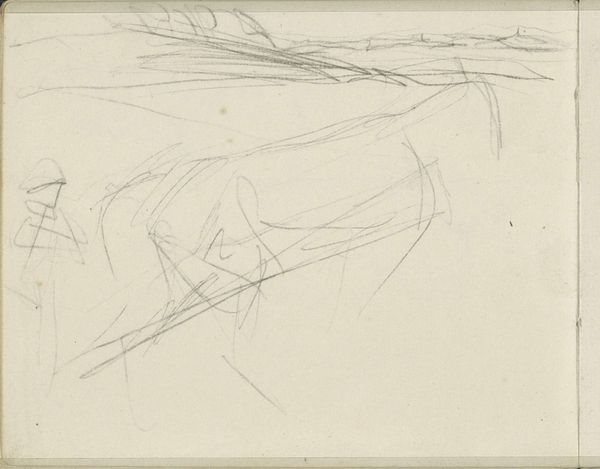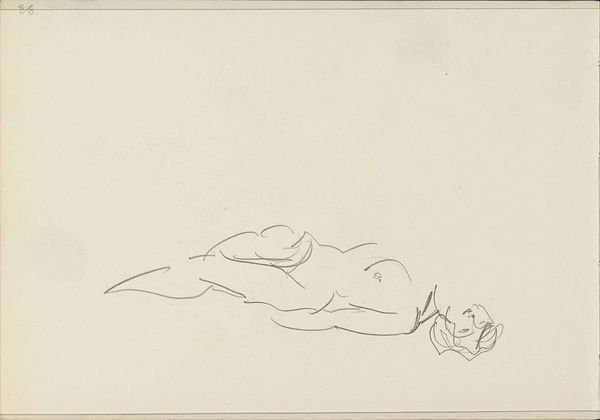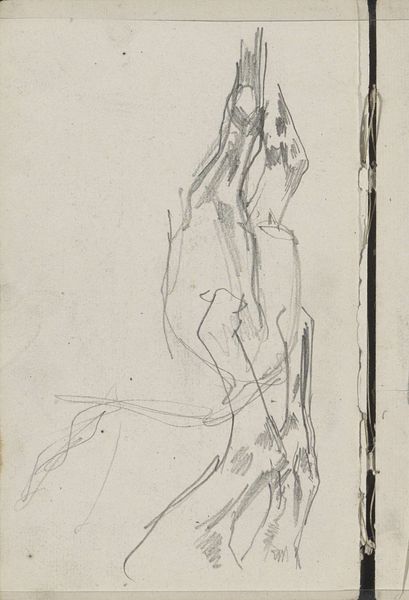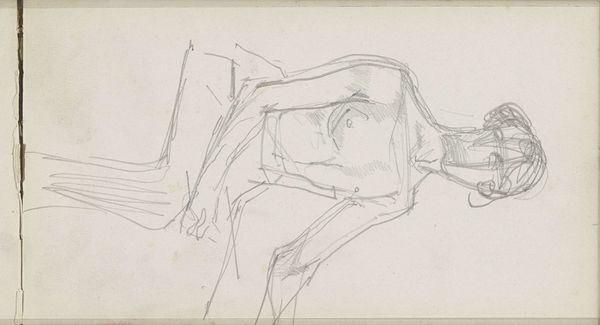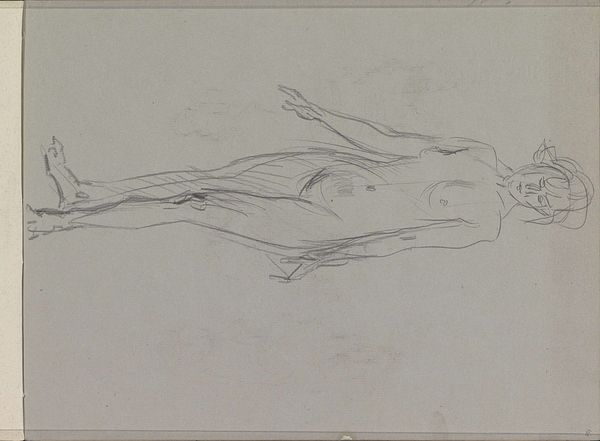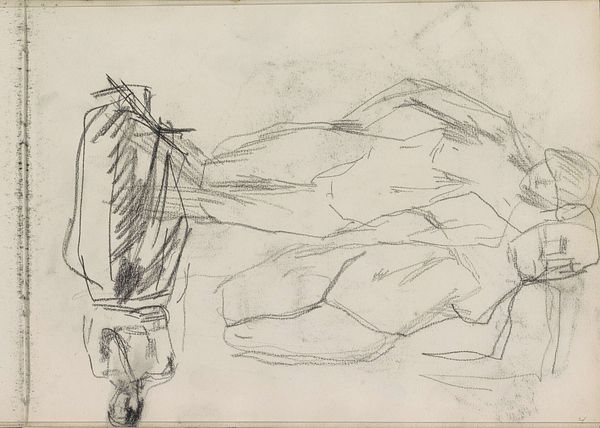
Copyright: Rijks Museum: Open Domain
Editor: So, here we have Isaac Israels' pencil drawing, "Gebogen vrouwenbeen", created sometime between 1915 and 1925. It's of a bent leg, quite minimal in its depiction, almost fleeting. What do you see in this piece? Curator: What immediately strikes me is the tension between the intimate nature of the subject—the nude female form—and the detached, almost clinical approach in its rendering. Considering Israels' context, a privileged background amidst a rapidly modernizing world, how might this drawing reflect, or perhaps subvert, societal expectations regarding the female body? Is it a celebration, an objectification, or something more nuanced? Editor: I hadn't considered the societal context so much. It seemed almost like a quick study, a moment captured. Curator: Exactly. The 'quick study' feeling is vital. But let's think about what that "quickness" implies. Was Israels afforded the luxury of this detached observation because of his position? How does the unfinished quality of the piece interact with prevailing power dynamics? Consider, for example, how similar imagery might be policed or interpreted differently when created by female artists. Editor: That’s a good point. I see how considering the artist’s background gives it another layer. I was so focused on the aesthetic that I overlooked the social implications. Curator: And that's precisely the critical work! Examining art through the lens of intersectionality—gender, class, historical moment—helps us unpack not only the beauty but also the complex systems of power embedded within it. Editor: I'll definitely look at art with a wider view now. Curator: And I'm reminded to look more closely at the pure aesthetic qualities that can trigger such deep thinking. Thanks for pointing that out!
Comments
No comments
Be the first to comment and join the conversation on the ultimate creative platform.
